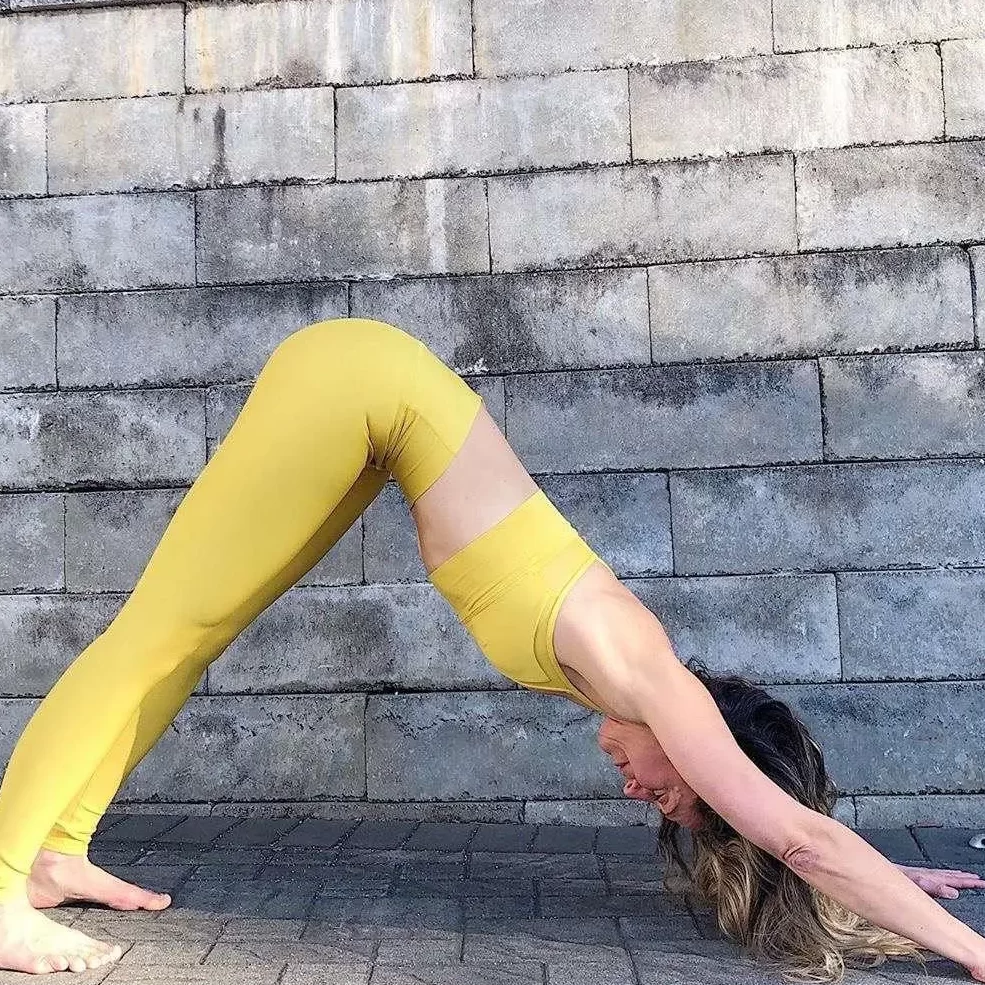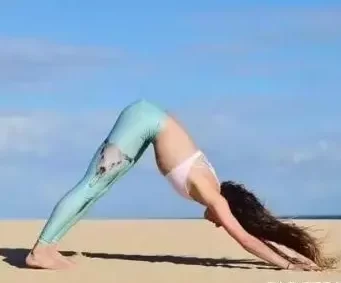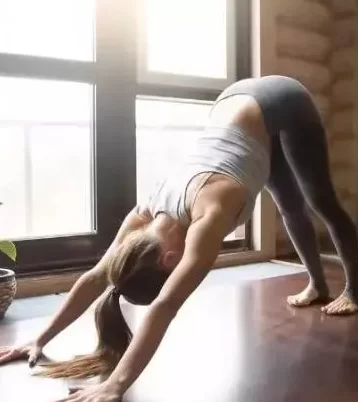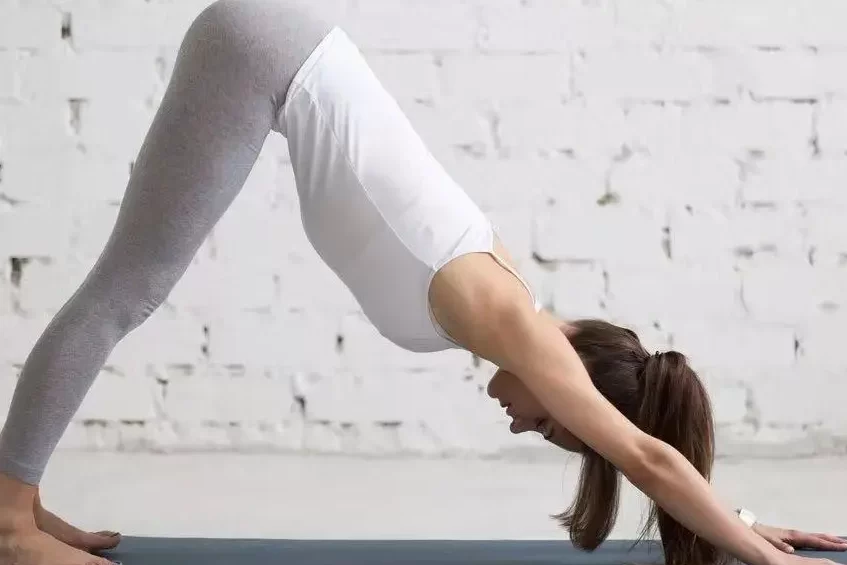Today’s question for us: Do you have to walk your feet forward in Downward Dog? That is: When transitioning from Up Dog to Down Dog, should you change the distance between your hands and feet into Down Dog?How to adjust the distance between hands and feet when practicing yoga downward dog?

No pose exists alone, but is associated with its preceding and following poses. This is especially important when we talk about Downward Dog. What we do when it comes to establishing a comfortable, stable position in Downward Dog depends on how we got there.

We can get into Downward Dog in many different ways. For example, you can simply fold forward from a standing position, place your hands on the mat, and step back with your feet into Downward Dog. If you get into Downward Dog this way, you don’t need to adjust the distance between your hands and feet by moving your feet inward. Naturally retreats to a distance that feels comfortable.

Entering Downward Dog from the Four-Poster
In Vinyasa, transition from one to Upward Dog, then Downward Dog. At this point we may need to change the length between the hands and feet, when we transition from this to Downward Dog, the distance between the hands and feet is set for our 4-post or Upward Dog, depending on where we are transitioning Whether the distance between the hands and feet has changed in these two poses.
As we transition between poses, we may slide or flip our feet to adjust how far our feet are back. There may be some reasons for wanting the same distance between the hands and feet in Downward Dog as in Upward Dog. In both poses, the distance between our hands and feet affects pressure perception in the lower back, shoulders, and wrists. But Downward Dog is a different pose, so we might expect it to have a different distance between the hands and feet.

If your four-poster and Upward Dog are “correct,” then you should naturally get to the right place in Downward Dog as well.
If we’re going up dog into down dog, remember that our hand-foot relationship is usually dictated by the flexibility of our spine. The more flexible it is, the closer our hands and feet can be to each other. The less flexible our spine is, the more distance we need between our hands and feet.

scale factor
Proportion is important. If we have shorter legs/longer torso relative to our body, walking our feet inward may change the distance between our hands and feet so that we can get a comfortable resting position in Downward Dog.
If you transfer weight and energy to your feet. If we want to stress the calf muscles, then we may want to place the feet a little further apart, or even lift the heels up due to the distance. This of course emphasizes the stretch in the calf muscles.

If you have tight hamstrings, move your feet forward as well, because of the tight hamstrings, you have to bend your knees to hold the position comfortably. If we are very tight in the back of our body and our feet are far away from our hands, we may find it difficult to straighten our legs.
In Downward Dog, walking the feet slightly inward removes some of the tension and allows us to stretch the calves and hamstrings more evenly. In Downward Dog, the reason we walk our feet inward is to take some of the weight off the shoulders and move it back onto the legs.
Beginners, especially, don’t have enough strength to practice Downward Dog repeatedly. A tense body, an inability to balance the weight between your hands and feet, combined with a lack of strength, can lead to overworked shoulders. You can reduce some tension by walking on your feet a little, which makes it easier to shift some of the weight from your shoulders back to your feet.
Read more tips about health and fitness http://www.growmorehealth.com
